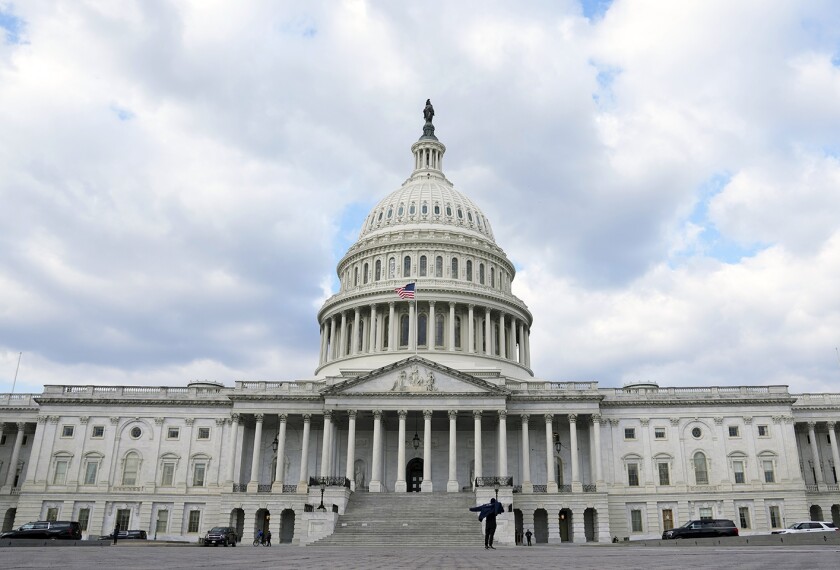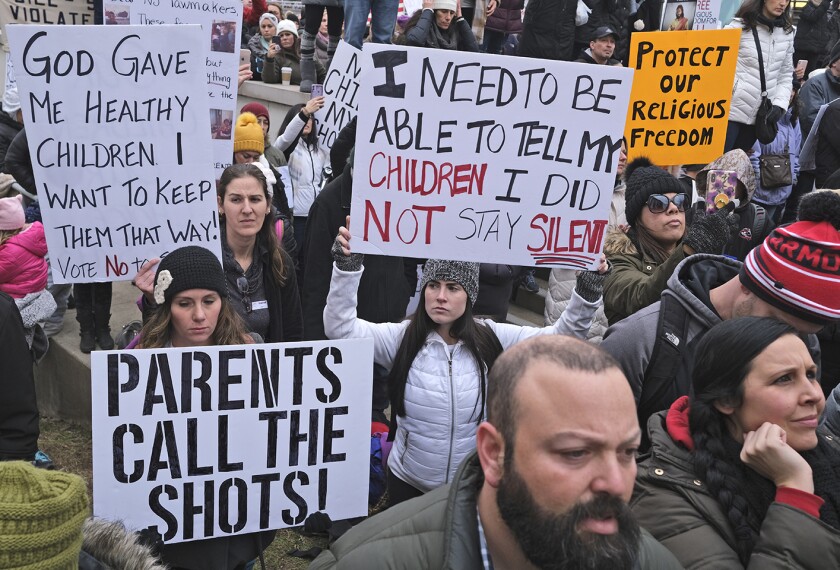Nearly two semesters into the pandemic, there’s still no national picture of whether students are actually getting instruction, and ongoing changes to the way states track attendance may mean more students could slip through schools’ radar.
Thirty-two states and the District of Columbia are back to asking districts to track daily attendance, according to a new report by Attendance Works, a San Francisco-based initiative aimed at promoting research and policy action around attendance. That’s an improvement over last semester, when the nonprofit Center for Reinventing Public Education found that little more than 1 in 4 districts required taking attendance at all once schools moved to remote learning during the first wave of pandemic quarantines. But there’s wide variation in how districts are asked to monitor student attendance, and experts argue existing systems intended to flag students who need support may fall short because of it.
Daily attendance before the pandemic was required in all states and used for three key things: counting the overall number of students for funding purposes; identifying students who missed instruction and could be at risk of falling behind academically or disengaging from school; and holding districts accountable for keeping students in class. This year, with districts already on the hook for greater spending to follow health procedures and provide equipment for remote and hybrid instruction, the need for a full student roll for funding purposes is starting to conflict with the need to provide attendance data for instruction.
For example, in Alaska, students attending school remotely are counted as though they are in correspondence schools, automatically labeled as 100 percent attendance. Similarly, Missouri tracks attendance for students attending class in person or in hybrid remote instruction, but for full-remote instruction, their attendance is automatically considered 94 percent. Eleven states leave attendance decisions entirely up to local districts.
“If you are funding based on average attendance, states are trying to hold their districts harmless for the fact that kids might not always be showing up” to remote learning sessions, said Hedy Chang, Attendance Works executive director and president. “But an unanticipated impact is, then it doesn’t create any incentives to track and monitor and support kids. ... If you’re trying to use your own warning system, to make certain to know whether or not a kid is in trouble or has issues or challenges and needs additional outreach, you want to know that a kid’s attending.”
States have offered a wide array of ways for districts to identify student engagement. California, for example, requires daily attendance, but schools can count a student through a teacher meeting with him in person or virtually; through documenting that the student has turned in assignments or participated in online activities; or through reports that a student has had daily contact with other nonteaching district staff.
“And then the question is, what are the measures that you’ve received instruction? Is it just logging on, is it being on a virtual classroom? ... Is it submitting an assignment? Is it responding to some kind of quiz while you’re on class?” Chang said. While there is substantial evidence that a student who misses 10 percent or more of in-person instruction during a normal year is at risk of falling behind in school, there is no research consensus at this point on the best measure of remote learning engagement, or benchmarks for how much remote learning a student must attend in order to stay on track academically.
“There’s probably an undercount of who needs outreach and support, given these various ways people are tracking attendance,” Chang said. “They’re probably undercounting kids because there are kids who log in or maybe show up for five minutes, but they actually still don’t receive instruction.”
The study highlighted some ways that states are using attendance policies to help schools identify students at risk and even engage families while schools are remote:
- Connecticut allows districts to use electronic records of student engagement, including live remote classes, time logs from student learning platforms, and assignment submissions to track attendance; students’ time must equal at least half a school day.
- In Mississippi, districts who do not use online management systems must make direct contact with every student every day. This personal outreach can help schools check in on families and identify additional academic or social support needs, Chang said.
- Connecticut has also moved from an annual report on absenteeism to monthly collection and publication of attendance data, to give districts quicker feedback.
- Nevada districts operate on staggered attendance schedules to reduce virus exposure, and the state has lifted daily attendance requirements but asked districts to provide new attendance monitoring that takes into account students’ potential need to quarantine.






